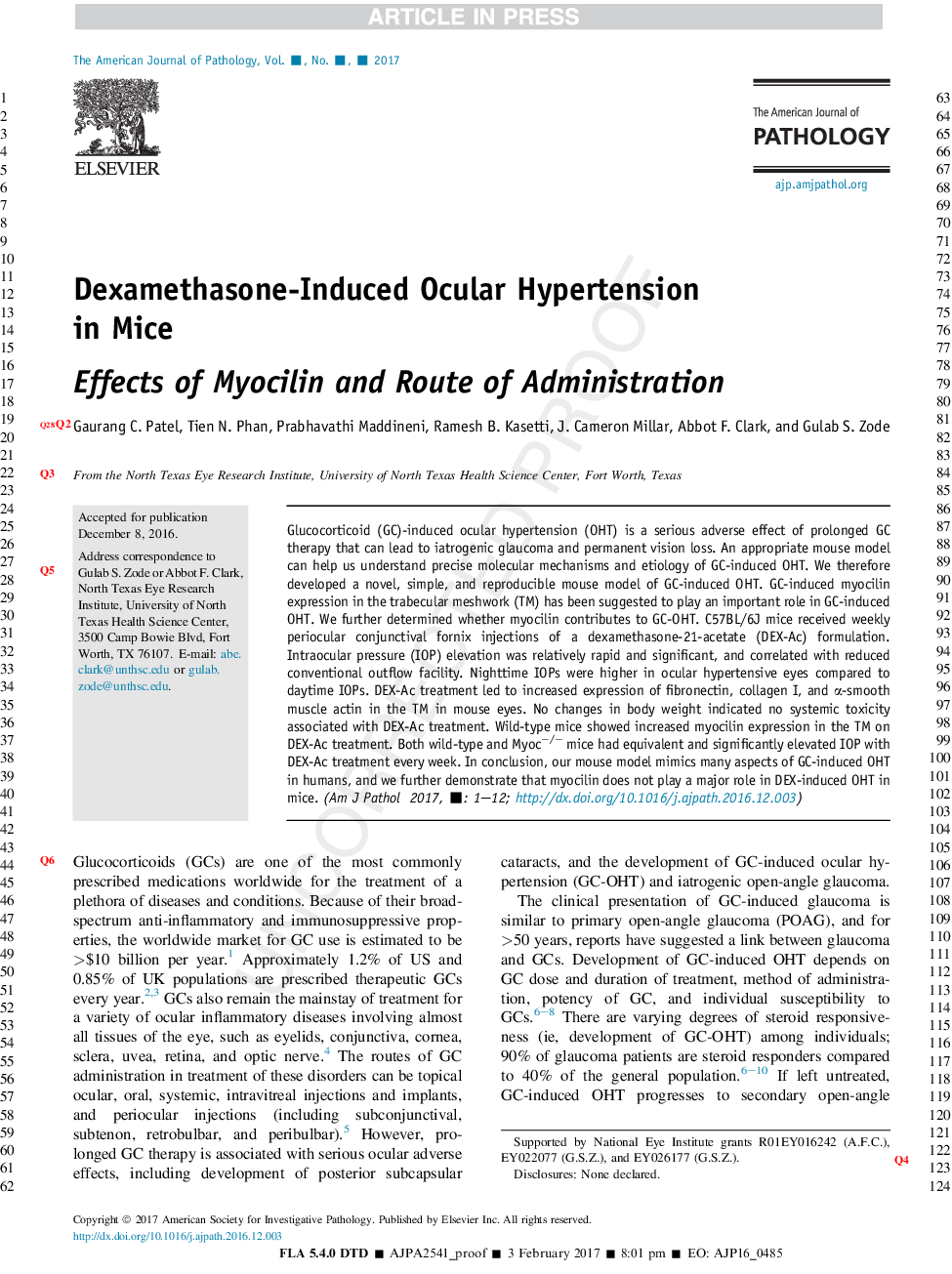| Article ID | Journal | Published Year | Pages | File Type |
|---|---|---|---|---|
| 5596162 | The American Journal of Pathology | 2017 | 13 Pages |
Abstract
Glucocorticoid (GC)-induced ocular hypertension (OHT) is a serious adverse effect of prolonged GC therapy that can lead to iatrogenic glaucoma and permanent vision loss. An appropriate mouse model can help us understand precise molecular mechanisms and etiology of GC-induced OHT. We therefore developed a novel, simple, and reproducible mouse model of GC-induced OHT. GC-induced myocilin expression in the trabecular meshwork (TM) has been suggested to play an important role in GC-induced OHT. We further determined whether myocilin contributes to GC-OHT. C57BL/6J mice received weekly periocular conjunctival fornix injections of a dexamethasone-21-acetate (DEX-Ac) formulation. Intraocular pressure (IOP) elevation was relatively rapid and significant, and correlated with reduced conventional outflow facility. Nighttime IOPs were higher in ocular hypertensive eyes compared to daytime IOPs. DEX-Ac treatment led to increased expression of fibronectin, collagen I, and α-smooth muscle actin in the TM in mouse eyes. No changes in body weight indicated no systemic toxicity associated with DEX-Ac treatment. Wild-type mice showed increased myocilin expression in the TM on DEX-Ac treatment. Both wild-type and Myocâ/â mice had equivalent and significantly elevated IOP with DEX-Ac treatment every week. In conclusion, our mouse model mimics many aspects of GC-induced OHT in humans, and we further demonstrate that myocilin does not play a major role in DEX-induced OHT in mice.
Related Topics
Health Sciences
Medicine and Dentistry
Cardiology and Cardiovascular Medicine
Authors
Gaurang C. Patel, Tien N. Phan, Prabhavathi Maddineni, Ramesh B. Kasetti, J. Cameron Millar, Abbot F. Clark, Gulab S. Zode,
